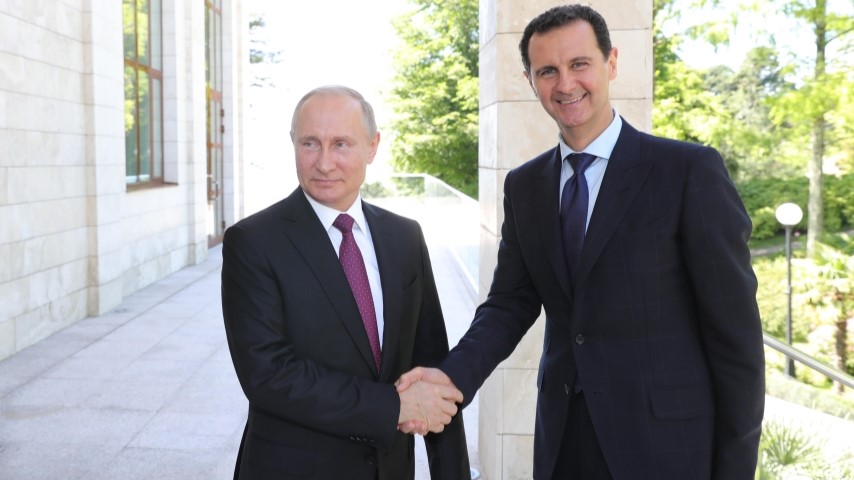The Syrian Civil War Reignites
Photo by Mahmoud Bali (VOA), Public domain, via Wikimedia Commons
As the tentative, uncertain ceasefire in Lebanon predictably verges on collapse, chaos is, once again, sweeping through neighboring Syria. The country’s bloody, 13-year civil war — a conflict that never ended, but was rarely mentioned in the West in recent years — has suddenly sparked back into life over the past week. A mishmash of rebel forces, led primarily by the Sunni Islamist militant group and former al-Qaeda affiliate, Hayat Tahrir al-Sham (H.T.S.), has swept into Aleppo, the second-largest city in the country, before pushing further into regime territory and Kurdish-held areas. Their progress has been swift and shockingly successful.
The Syrian army has, in its own words, undertaken a “temporary troop withdrawal” from Aleppo in the wake of the rebel assault. But, while that retreat is an embarrassment for the regime, it has quickly struck back with airstrikes, supported by its ally Russia. For the first time since 2016, Russia has also begun bombarding Aleppo, the north-western, rebel-held city of Idlib, and the central province of Hama. Hundreds of people are dead already, many of whom were women and children, and tens of thousands have been forced from their homes. What comes next is unclear.
The H.T.S.-led attack on Aleppo is the most dramatic escalation in the civil war since 2020, when the conflict largely froze in place, with the country essentially split into different zones of control. President Bashar al-Assad’s regime, backed primarily by Russia, Iran, and Hezbollah, maintained about 60% of the country from that time until this past week, with the rest of Syria split between a range of different groups. The U.S.-backed, Kurdish-led Syrian Democratic Forces (S.D.F.) control much of the east, Turkey and its proxies control areas in the north, Israel continues to occupy the Golan Heights, and the Islamic State, following its defeat five years ago, continues to operate sleeper cells in the desert. Hayat Tahrir al-Sham, meanwhile, has been the most dominant of several militant forces in control of the northeastern Idlib Governorate.
The H.T.S.-led operation is a clear threat to the Assad regime, which is ruling over a country already weakened by U.S. sanctions and increased Israeli attacks since October 7, 2023. More pertinently, the attack comes as Assad’s most important allies are preoccupied by their own wars. Hezbollah, in particular, is widely reported to be in a severely weakened state as a result of its war against Israel, but Iran, too, has been shaken by Israeli bombardments. Russia, despite launching airstrikes on Aleppo and Idlib, is obviously preoccupied by its invasion of Ukraine, which has already forced it to withdraw air defense systems and troops from Syria. The rebels, clearly, have identified this moment as their best opportunity to strike against a weakened, isolated Assad regime.
Things presently appear ominous for Assad, but it would certainly be premature to presume his fall. Regime change, after all, has repeatedly been predicted ever since the country descended into civil war in 2011, but it has yet to come true. Assad has been forced to surrender huge swaths of the country to his opponents through the years of war, but his grip on most of the country, though at times tenuous, has held.
What all this means for the people of Syria is difficult to say. For 13 years they have endured this civil war, which, according to the Syrian Observatory for Human Rights, has seen more than 600,000 people killed. About a quarter of those people were civilians. More than half the country’s pre-war population of 21 million was displaced and millions remain so, either within the country itself or abroad, and ever more people are sliding into profound poverty. The situation, even though Western media has hardly reported on it until this past week, has remained horribly bleak, and this latest flare-up has the potential to spiral. So many armed groups are involved in this war, and already they are clashing with each other. Russia is bombing the country, and the United States has confirmed it carried out a strike in eastern Syria. The situation is extremely dangerous.
If Assad really was to fall in the coming days, weeks or months, the end of his rule would not be something to mourn. He is a war criminal, the leader of a regime responsible for torturing opponents and using chemical weapons. But what would come after him? H.T.S., though it is apparently attempting to distance itself from its radical jihadi past, could very well fall back into their old ways. The specter of ISIS can’t be ignored, either, as it has historically thrived on chaos — and chaos is what now threatens to engulf the country.
What does seem certain is that, for as long as this flare-up of violence continues, and as winter sets in and an already weak health system is attacked, lots of people in Syria are going to die or be forced from their homes. What it all means for the wider Middle East, already engulfed in flames, is uncertain. But it will likely be dire.